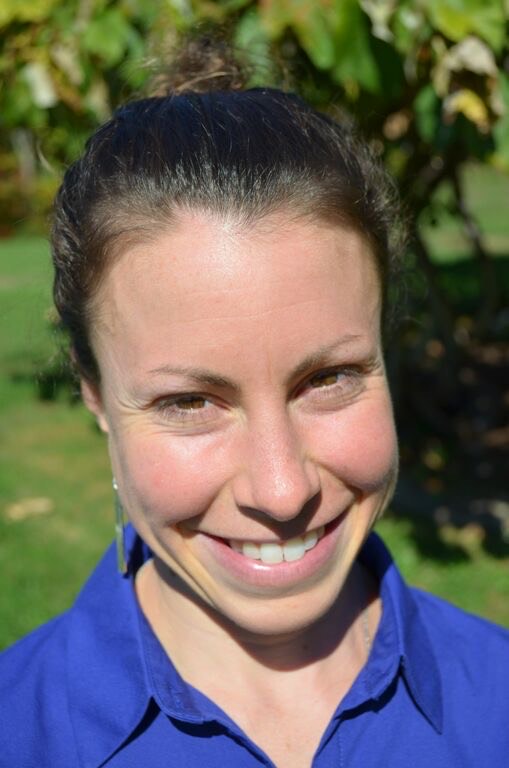The oblique muscles: What are they and how to make them stronger
A physical therapist shares the best exercises to strengthen oblique muscles
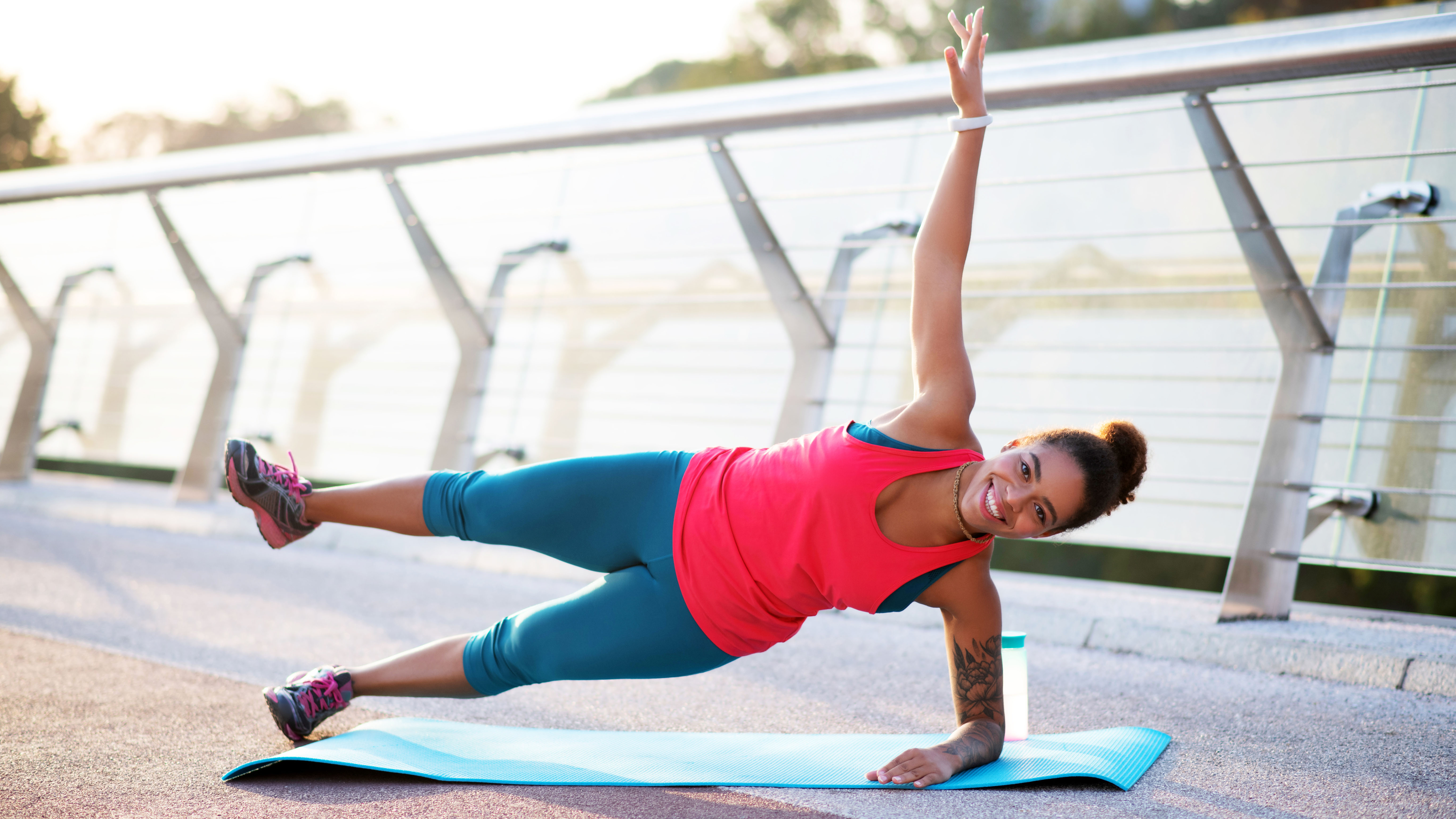
The oblique muscles tend not to immediately spring to mind when people think about strong abs. When someone says they want a “six-pack”, they’re describing muscle definition in the central rectus abdominis muscles rather than those to the sides.
While there’s nothing wrong with aspiring to a six-pack aesthetic and performing exercises to strengthen this muscle including your muscle fiber types, it’s equally important to train the obliques – the muscles on the sides of your torso that enable side-to-side bending, torso rotation, and spinal flexion.
Although your current fitness routine might be neglecting them, there are quite a few effective core-strengthening exercises that make them stronger. What’s more, many oblique exercises don’t even require specialized exercise equipment such as medicine balls, dumbbells, or the best ab rollers.
To learn more about the oblique muscles, including how to strengthen them, we spoke to Hillary O’Connor, a physical therapist and pregnancy and postpartum corrective exercise specialist.
What are the oblique muscles?
The oblique muscles are found lateral to the torso. There are two layers — the internal and external obliques — and both play a pivotal role in stabilizing and protecting your spine by resisting excessive rotation.
The internal obliques lie under the external obliques so they are the core’s deeper muscles. O’Connor says you can visualize their location using this simple trick: “Imagine you had the front half of a corset running from just below the breasts [or chest], along the sides of the body, and down to the pubic bone,” she shares. “That is the surface area that both of these muscles take up.”
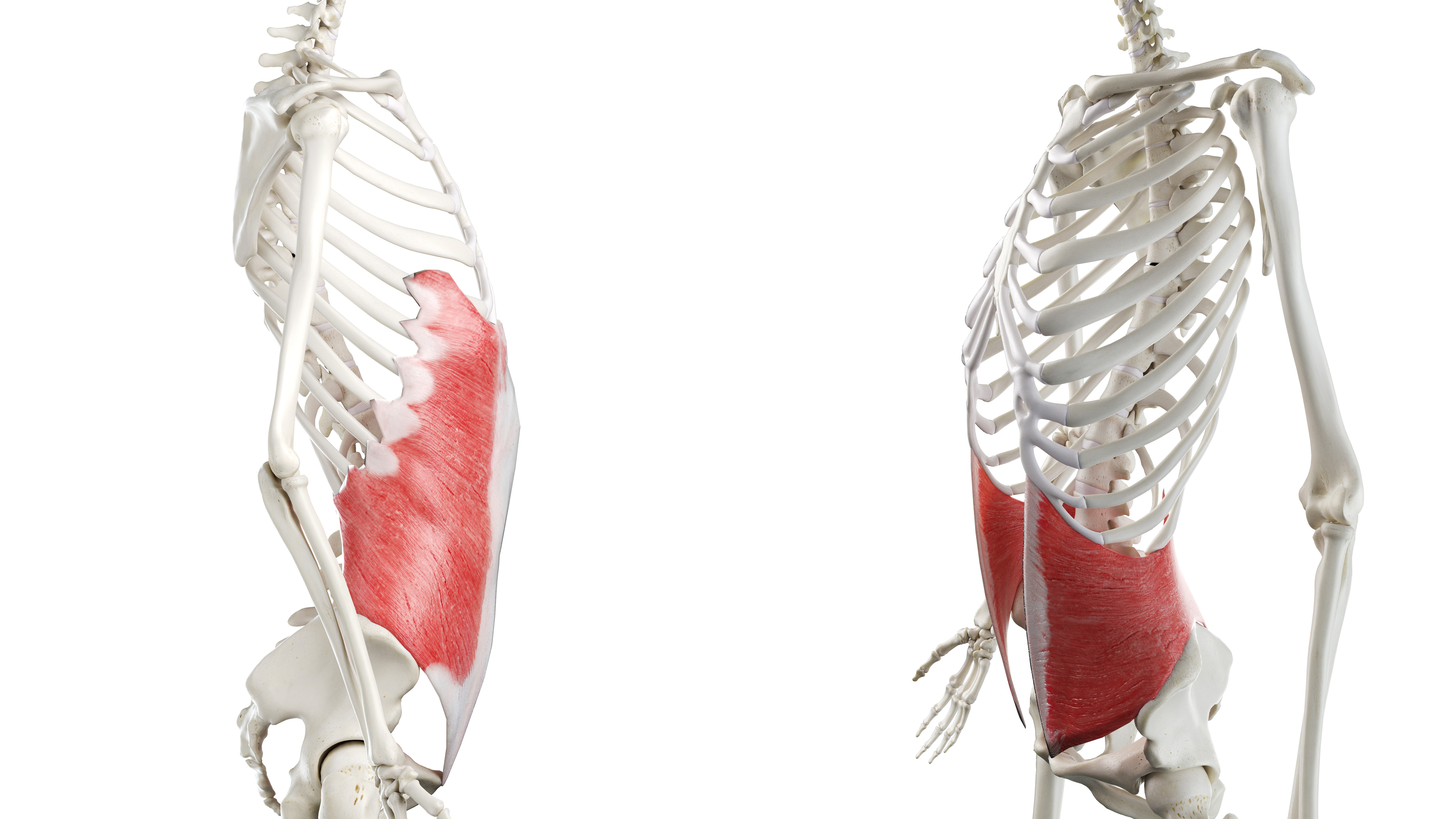
You can see the slightly different locations in the images above – the left image shows the location of the external obliques, and the right image shows the deeper internal obliques.
What is the function of the obliques?
So, what do the oblique muscles do and why are they important?
"The oblique muscles are important to support the body and they help to force exhaled air out of the lungs,” says O’Connor. “They also provide stability to the ribcage and pelvis, assist in side bending the body, rotate the trunk, and assist in flexing the trunk forward.”
Each one of these motions is integral to many activities of daily living, which is why oblique exercises are often considered functional strength exercises.
“Trunk support is needed to move and stay upright, while side bending and forward flexion are needed to pick things up from the ground, and rotation [helps you] roll out of bed or turn to look behind you,” explains O’Connor, who adds that, because the oblique muscles play an integral role in everyday life, strain or injury to these muscles can be debilitating. “The oblique muscles stabilize the pelvis, so if they are weak, it could lead to an anteriorly tilted pelvis which can contribute to back pain.”
Exercises to strengthen the oblique muscles
O’Connor says that the obliques can be strengthened through a variety of activities and motions such as side bending, rotation, and trunk flexion (which include exercises such as sit-ups).
“Since they tend to be active in almost all motions, it is very easy to incorporate obliques into any exercise being performed,” O’Connor notes. She recommends the below if you're looking for specific workout moves.
Supine reaches
According to O’Connor, this exercise allows you to strengthen the oblique muscles in a modified position right from your bed or the floor. “In this position, you are strengthening the obliques from the 'forced exhale' while aligning the ribcage and pelvis so you can move optimally,” she explains.
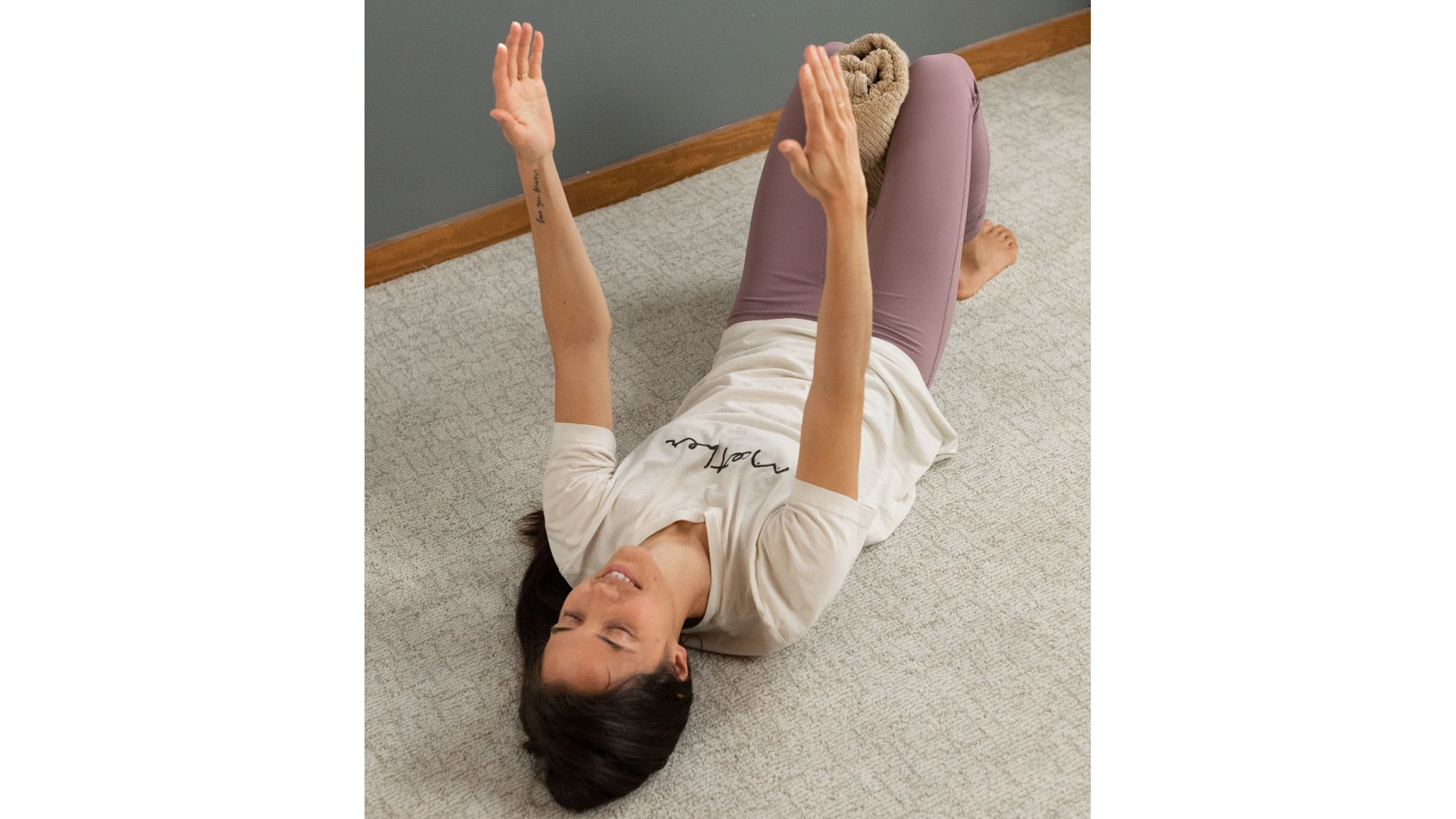
- Lie on your back with your knees bent and feet flat on the floor and head firmly resting on the floor.
- Place a rolled up towel in between your knees and squeeze it gently to engage your inner thighs.
- Without moving your feet and keeping your low back flat on the floor, inhale, gently pulling your heels towards your butt, feeling your hamstrings (the back of your thighs) engage.
- Exhale, reaching your arms straight up towards the ceiling.
- Continue this pattern of inhaling while you press your entire back into the ground and then exhaling, reaching your arms towards the ceiling and feeling your ribs move back.
- Take four breaths after your first attempt, then repeat three times.
Supine arm extensions
O’Connor says this is another oblique exercise that’s safe for anyone whether beginners, elderly, or those in the early postpartum period. It’s very similar to Supine Reaches but it progresses the exercise to reach all the way back behind your head.
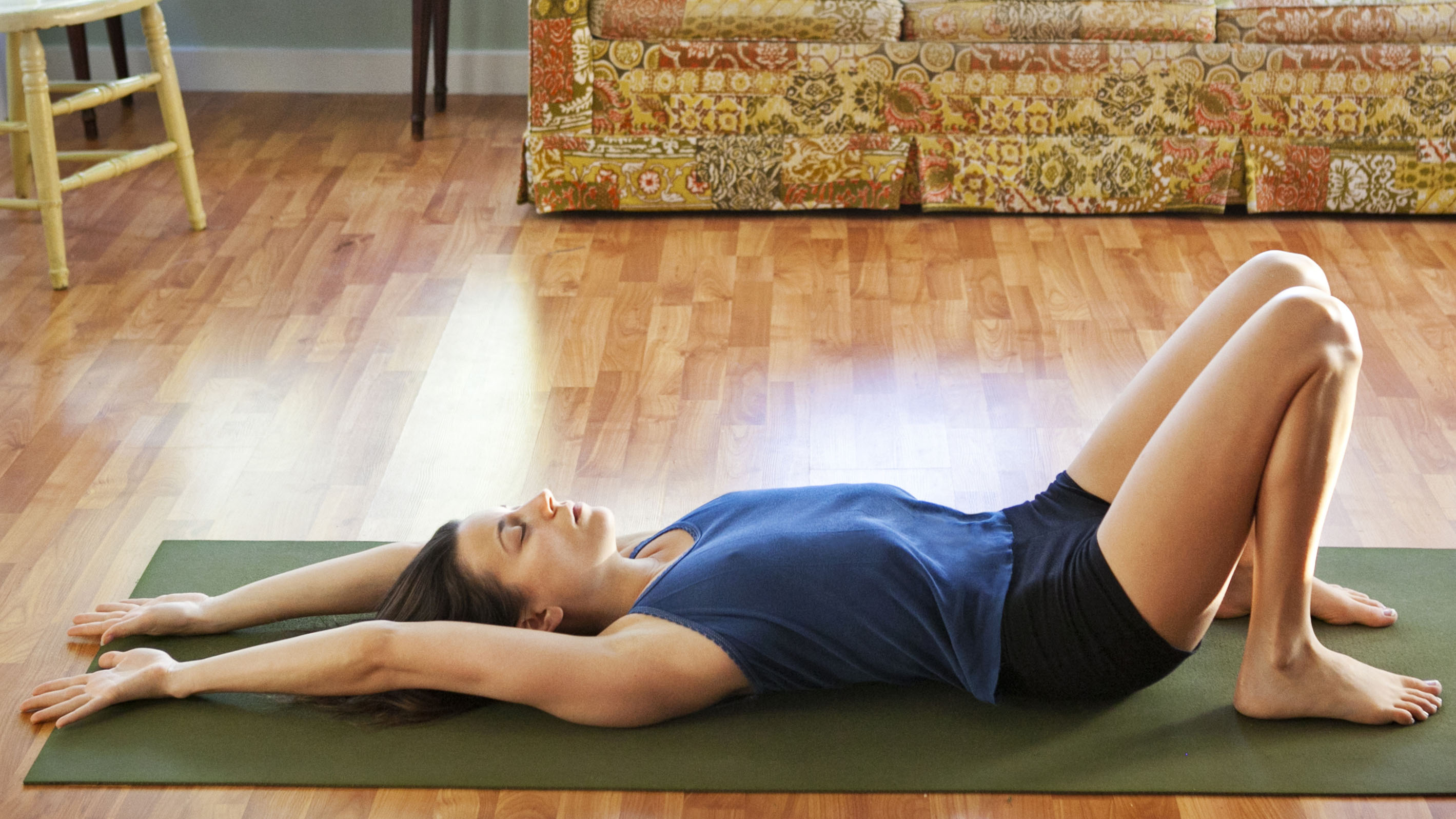
- Lie on your back with your knees bent and feet flat on the floor and head firmly resting on the floor.
- Place a rolled up towel in between your knees and squeeze it gently to engage your inner thighs.
- Without moving your feet and keeping your low back flat on the floor, inhale, gently pulling your heels towards your butt, feeling your hamstrings (the back of your thighs) engage.
- Exhale, reaching your arms straight up towards the ceiling and then beyond backwards over your head towards the floor.
- Continue this pattern of inhaling while you press your entire back into the ground and then exhaling, reaching your arms back as far as possible.
- Take four breaths after your first attempt, then repeat three times.
Standing wall supported reach
If you have difficulty getting up and down from the floor or you want to do an oblique exercise at the office, this exercise is a safe and effective way to target the obliques while you stand.
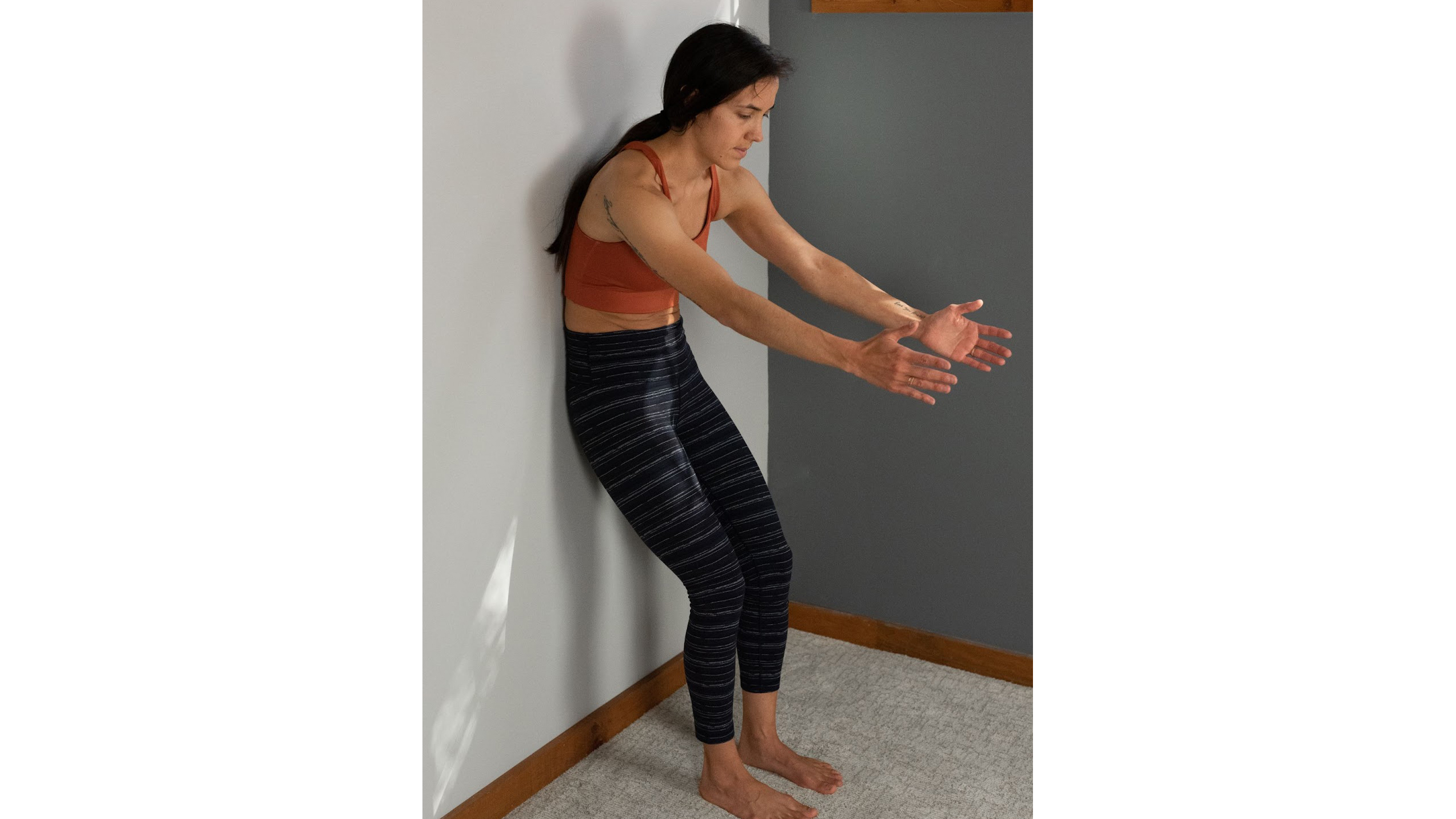
- Stand with your back against the wall with your feet about one foot in front of the wall and hip-width apart.
- Soften your knees so they are slightly bent.
- Gently perform a pelvic tilt with the glutes (butt muscles) relaxed.
- Reach your arms forward and down so your upper back comes off the wall but the lower region of your back should remain in contact with the wall.
- Imagine there is a magnet gently pulling your knees to want to touch one another, but don't fully touch.
- Inhale, pressing your arms back to the wall.
- Exhale, reaching your armpits forward. Your upper back will peel off the wall a little more with each exhale
- Perform four breaths, then repeat three times.
Kneeling side plank with rotations
“This exercise will specifically target the obliques since they are the main assists in sidebending of the body,” says O’Connor. “The addition of rotation in this exercise will add extra difficulty to target and strengthen the obliques.” As you get stronger, you can progress the exercise by lifting your knees off the floor and performing it from your feet.
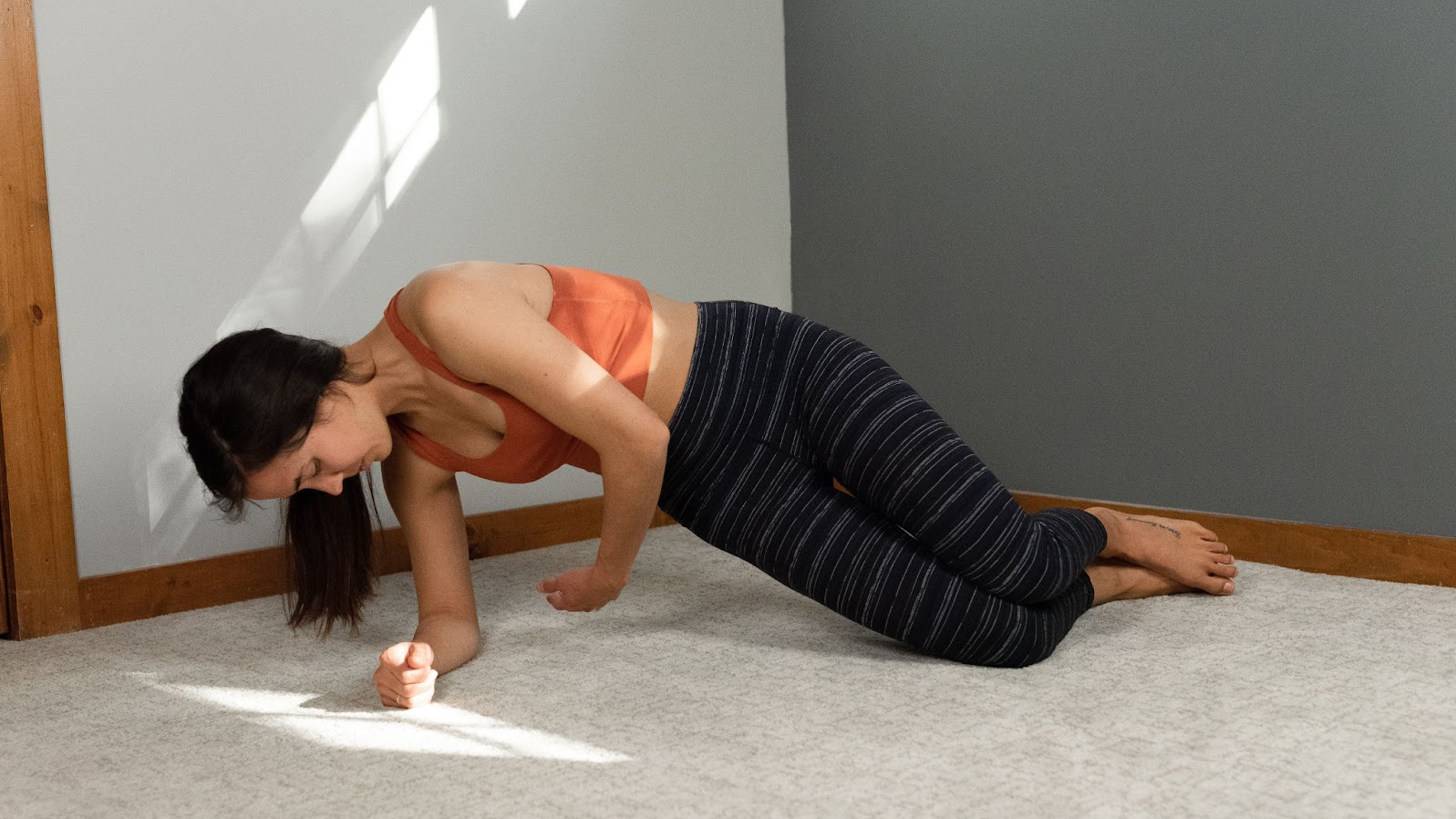
- Lie on your side with your knees bent 90 degrees and stacked on top of each other. Your elbow should be right under your shoulder.
- Exhale and lift your ribs away from the floor.
- Inhale, lifting your hips off from the floor into side plank position (modified on your knees for beginners or on your feet for advanced athletes).
- Exhale, rotating your torso to reach your top arm under your body.
- Inhale, rotating back towards the ceiling
- Perform 5 rotations on each side per set and complete 3 sets.
Split squat with arm rotations
This oblique exercise also strengthens your quads, glutes, hamstrings, and entire core. You can progress the move by holding onto a dumbbell or medicine ball for added resistance.
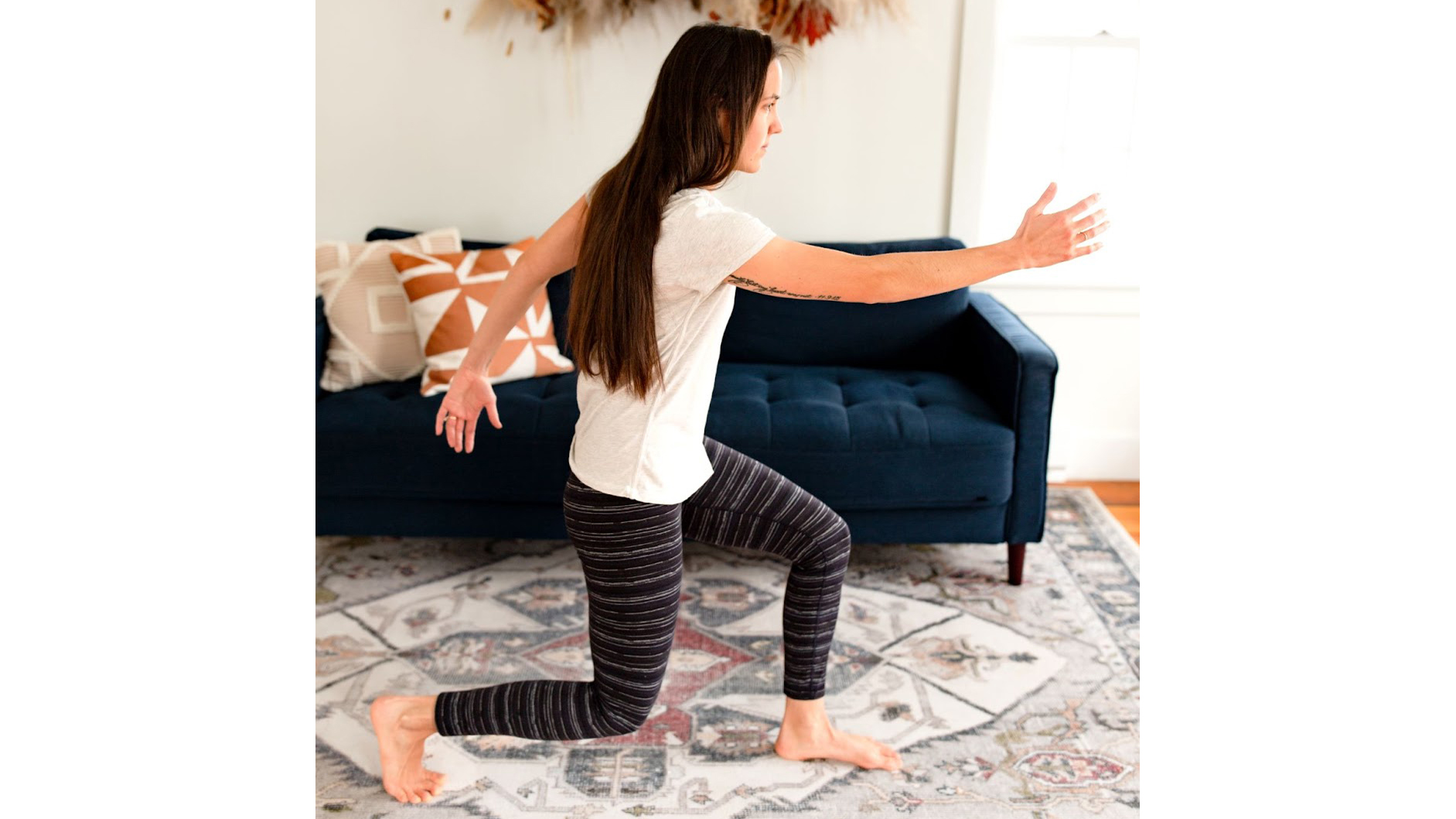
- Place your left foot in front of your right in a static lunge position.
- Inhale as you drop your body down into a lunge, bending both knees 90 degrees. As you drop into your lunge, reach your right arm forward and left arm backwards (weights are optional),
- Exhale, switching your arms as if you were walking, rotating from the torso. Allow your arms to guide you to get more rotation with each rep.
- Repeat 8-10 reps before coming back up to standing and then switch legs and repeat.
Hip drops
This exercise is a modification of the traditional side plank. It targets and strengthens your obliques.
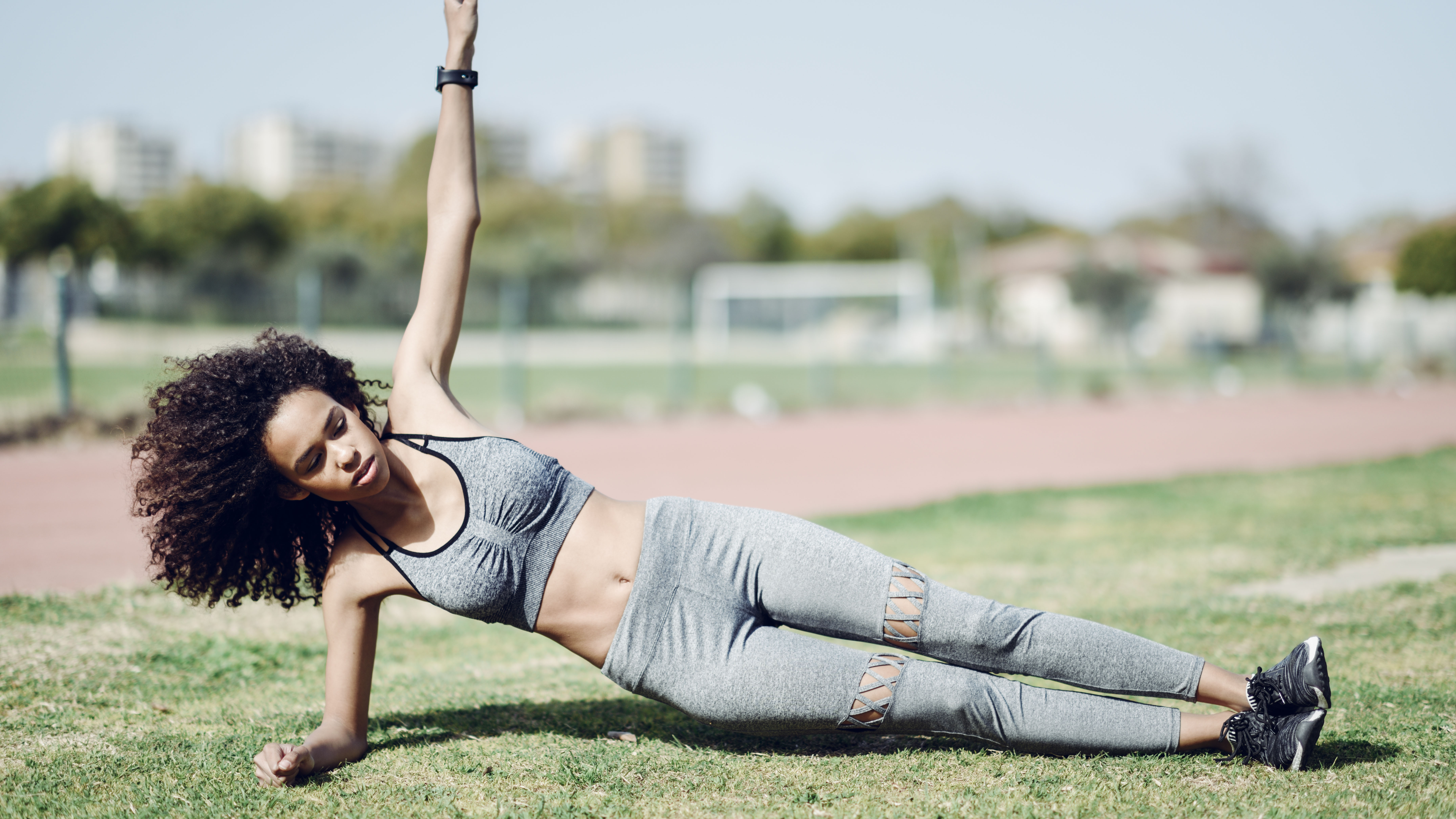
- Lie on your right side with your legs stacked on top of each other.
- Push up so that you’re on your right forearm, and your hips and torso are off the ground in a side plank position.
- Your body should form a straight line from your head to your heels.
- Drop your hip back down so that it brushes the floor, and then squeeze your obliques to lift it back up in line with your propped up body.
- Complete 12 reps and then switch sides.
Spider-Man push-ups
Compound movements such as this exercise are super efficient because they engage multiple muscle groups at once. This push-up variation intensifies the involvement of your obliques — and core in general — especially if you move as slowly as possible and concentrate on engaging your core. It’s an advanced move, so give yourself time to master it.
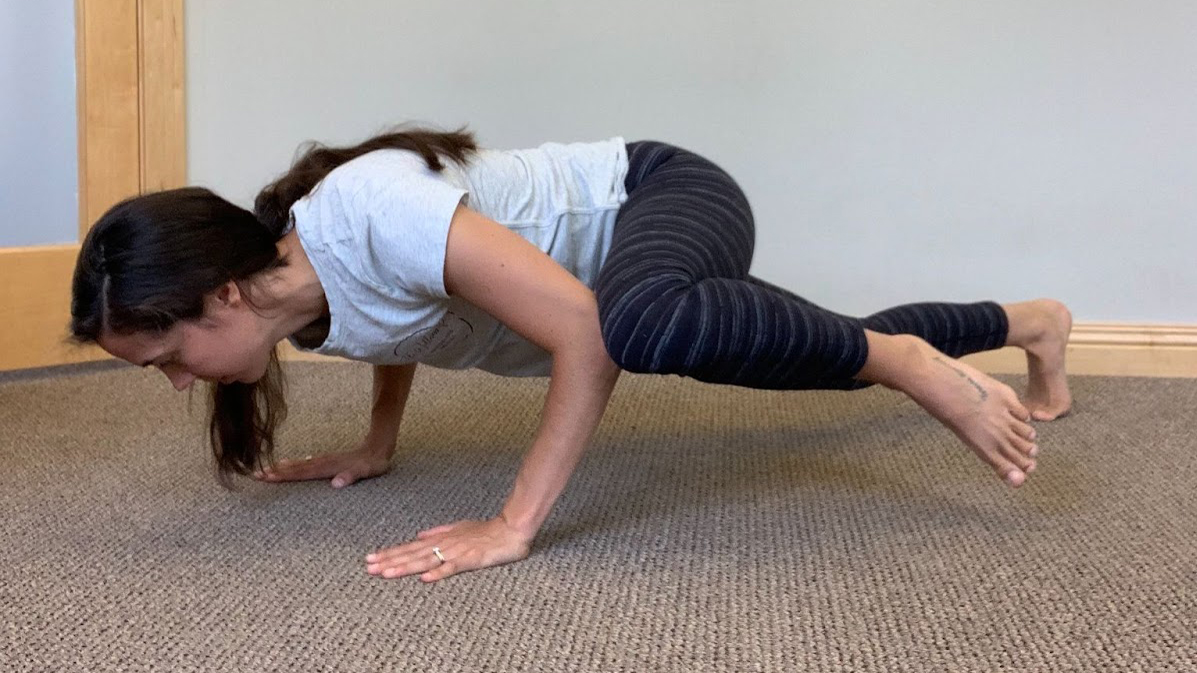
- Get in a push-up position with your hands slightly wider than shoulder-width apart.
- Instead of bending your elbows straight out to the side, angle your arms so that your elbows bend about halfway between out to the side and straight back (picture 4 and 8 on a clock).
- As you lower your chest to the ground, lift your right leg off the ground, bending the knee and drawing your leg forward so that the right knee comes up to the right elbow.
- Hover in the lowered position, holding your leg up by your elbow, for a full breath.
- Press back up, returning your leg to the starting position.
- Alternate legs and complete 20 reps total.
Crossover mountain climbers
You will get your heart pumping, legs burning, and core quivering with this bodyweight move. It modifies standard mountain climbers to increase the workload on the obliques. Be sure to maintain proper form with your hips in line with your body.
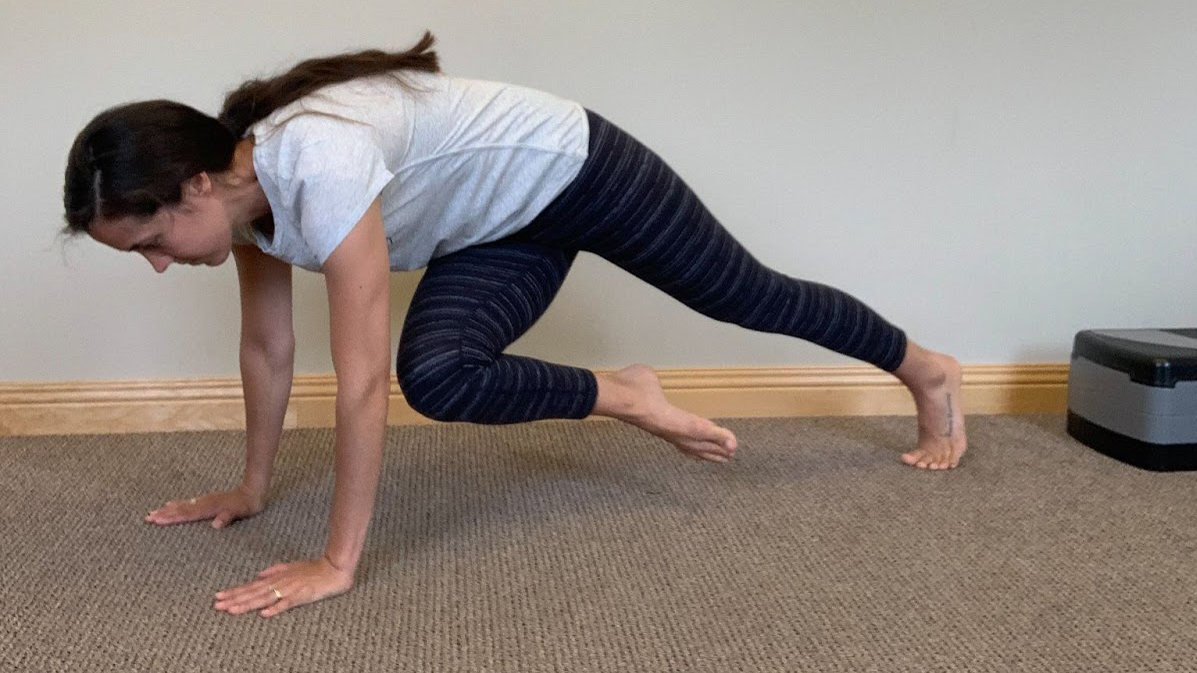
- Get into a push-up position with your core and glutes engaged.
- Pressing your weight into your hands, alternate blending each knee and bringing the leg up under your chest, crossing your body so that you aim to tap your right knee to your left elbow and left knee towards your right elbow.
- Move as fast and hard as you can for 30-60 seconds.
Sign up for the Live Science daily newsletter now
Get the world’s most fascinating discoveries delivered straight to your inbox.
Amber Sayer is a fitness, nutrition, and wellness writer and editor, and contributes to several fitness, health, and running websites and publications. She holds two masters degrees—one in exercise science and one in prosthetics and orthotics. As a certified personal trainer and running coach for 12 years, Amber enjoys staying active and helping others do so as well. In her free time, Amber likes running, cycling, cooking, spending time outside, and tackling any type of puzzle.
